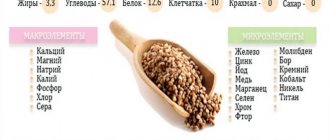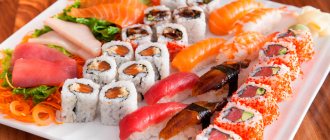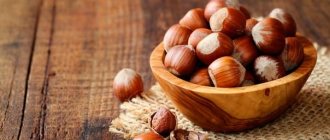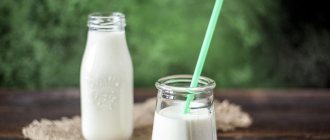Rice is a favorite product of Japanese centenarians and a healthy dietary food. Find out the calorie content of different types of rice, as well as ready-made meals, and include them in your menu without risking your waistline.
- Links to authoritative sources
Author: Kristina Lobanovskaya, doctor, practicing nutritionist Article updated: 03/04/2020
Ask a Question
Rice is loved and appreciated all over the world. This grain is very nutritious and goes well with spicy, sour, sweet and salty foods. Therefore, both simple and exotic dishes are prepared from different varieties of rice: side dishes, soups, salads, desserts, etc. In addition, diets and fasting days on rice are popular. But, like any product, it contains calories, the consumption of which should be controlled to maintain slimness.
Beneficial features
- It contains about 80% complex carbohydrates, so it should be included in the diet of those who want to lose weight. Carbohydrates tend to accumulate in muscles and provide a long-term flow of energy into muscle tissue.
- It contains almost no salt, so it is recommended for use by people with kidney diseases and disorders of the cardiovascular system.
- Potassium contained in rice neutralizes the aggressive effects of salt, which enters the body with other foods and removes its excess. This helps remove excess fluid from the body and improve metabolism.
- Does not contain gluten, a vegetable protein that can cause a severe allergic reaction.
- It is a source of B vitamins (B1, B2, B3, B5, B6, B9), which stimulate the functioning of the nervous, cardiovascular, digestive and endocrine systems, and vitamins E, PP, H.
- Has enveloping properties. Once in the digestive system, rice gluten gently envelops the walls of the stomach and esophagus. Therefore, the product is useful for people suffering from ulcers, gastritis and high acidity.
Macro- and microelements contained in rice (per 100 g)
- Calcium (40 mg).
- Magnesium (116 mg).
- Sodium (30 mg).
- Potassium (314 mg).
- Phosphorus (328 mg).
- Chlorine (133 mg).
- Sulfur (60 mg).
- Iron (2.1 mg).
- Zinc (1.8 mg).
- Iodine (2.3 mcg).
- Copper (560 mcg).
- Manganese (3.63 mg).
- Selenium (20 mcg).
- Chromium (2.8 mcg).
- Fluoride (80 mcg).
- Molybdenum (26.7 mcg).
- Boron (224 mcg).
- Vanadium (400 mcg).
- Silicon (1240 mg).
- Cobalt (6.9 mcg).
- Aluminum (912 mcg).
- Nickel (51.6 mcg).
How does rice work for weight loss?
When losing weight, simple and affordable rice will be especially useful. However, we note that it is often not used when losing excess weight. This is very in vain, because this product helps to cleanse the body and, most importantly, it contains all the important useful components.
Ordinary and affordable rice can provide invaluable benefits in the fight for a slim figure, although it is usually not customary to use the product when losing weight, but in vain. Cereal perfectly cleanses the body and contains necessary and beneficial components.
Proper use of such a product in the fight for an ideal figure includes:
- limited time period (using such a diet for a long time is very undesirable, because rice is known for its ability to cause a calcium deficiency in the body);
- compliance with restrictions (pregnant and lactating women, children, people suffering from gastritis and peptic ulcers).
Note that to obtain a good result, it is not the type of rice that matters, but the rate at which it is consumed.
To properly prepare dietary rice, we recommend rinsing it with cold water in the evening and leaving it overnight. In the morning, drain the water and prepare it using your usual method. Note that rice cooked in water is the best helper for those who are losing weight.
Effect of the rice diet
Of course, for those who want to lose excess weight, before going on a rice diet, you need to find out about the results of such a diet:
- Rice is a very healthy product for those who are losing weight. The most important benefit of rice is that it helps cleanse the body of toxins. Along with cleansing, your state of health also improves.
- To start a long and serious diet, we recommend starting with a small deload. The rice diet will help you here.
- If you are trying to lose weight on rice, then such weight loss has a long-lasting effect. To consolidate the results obtained, we recommend not consuming “heavy” foods for the next 10 days, this applies to fatty and salty foods.
- The rice diet always gives quick and visible results. In just 7 days of the rice diet you can get rid of 6 kg.
Read: Recommendations for making mozzarella cheese, composition and calorie content of the product
Energy value (per 100 g)
White. The grains undergo all stages of grinding, so they lose some of their beneficial properties (unlike unpolished grains). It is quick to prepare and most common in cooking. White rice contains 344 kcal.
Unsanded brown (brown). It is considered the most useful variety, since it is peeled only from the outer husk, preserving all the bran and nutrients. Unpolished rice removes cholesterol, stabilizes blood circulation, improves kidney function and normalizes water balance in the body. The calorie content of brown rice is 337 kcal.
Wild. It contains an almost complete list of proteins necessary for the human body (about 15 g of proteins per 100 g). Regular consumption of wild rice strengthens the muscular system, improves metabolic processes, and stimulates the functioning of the immune and digestive systems. Calorie content - 101 kcal.
Red. It has a low glycemic index (55), which allows it to be consumed by people suffering from diabetes. Red rice contains fiber, which improves digestion, adsorbs fats, lowers cholesterol levels in the blood and stimulates intestinal motility. In addition, it contains anthocyanins, which are powerful antioxidants. They slow down the aging process and prevent the occurrence of cancerous tumors. Calorie content of red rice is 362 kcal.
Long grain. Long-grained are those varieties of cereals whose grains reach 6 mm or more in length. Due to its high fiber content, it is very beneficial for the gastrointestinal tract. The calorie content of long grain rice is 365 kcal.
Basmati. Contains fiber and amylase, which improves the functioning of the pancreas. The energy value of basmati rice is 342 kcal.
Steamed. Steaming is a technology that allows you to improve the quality characteristics of rice cereals. When steamed, vitamins and minerals from the shells are transferred to the grains, and starch is destroyed, which is why this rice becomes more crumbly. Calorie content of steamed rice is 341 kcal.
Air. Calorie content of puffed rice is 402 kcal. This is a good option for a hearty and healthy breakfast. Since puffed rice contains high amounts of fiber and protein, such a breakfast will provide a long-lasting feeling of fullness.
For sushi. You can prepare it yourself from round grain (for this you will need rice vinegar and nori seaweed), or buy ready-made. The calorie content of rice for sushi is 330-350 kcal.
Calorie content of rice
Calorie content of white rice boiled in water per 100 grams
Boiled white rice has a calorie content of 116 kcal per 100 grams. This is not much, considering that to burn 100 kcal, it is enough to vacuum for 25 minutes, actively work in the garden for 15 minutes, or walk quickly around the yard or street.
Also, 100 g of cereal contains 2.2 g of proteins; 0.5 g fat and 24.9 g carbohydrates. Therefore, the product is recommended for those who do not want to gain weight.
Energy value of rice boiled with milk
If rice porridge is boiled in skim milk, its calorie content will be slightly lower compared to rice boiled in water - 97 kcal. Otherwise, the calorie content may vary somewhat depending on how much fat the milk product is used and whether sugar and butter are added during cooking.
Rice porridge belongs to the category of dietary products. It is often included in the diet of people who are recovering during the postoperative period or after suffering severe forms of illness. The exception is diseases of the stomach or intestines.
Rice porridge with milk contains slow carbohydrates. Thanks to them, the body receives energy replenishment for a long time. If a person follows a gluten-free diet, then rice is a good choice due to the lack of gluten in it.
Brown, unpolished rice
Brown rice is slightly healthier than white rice. After grinding, the white variety of cereal remains without a bran shell, which is why it loses many beneficial properties and vitamins.
Brown rice has a high concentration of vitamins and minerals, as well as a wide range of them. If you steam the grain for a little while, it will acquire a yellowish tint and become slightly transparent. In this case, some useful substances will move into the depths of the grains. If you polish the grain, you get regular white rice with less nutrients.
Since the concentration of vitamins is quite high, brown rice can have a complex effect on the human body.
It contains:
- Minerals . Phosphorus and silicon predominate. Potassium, calcium, sodium and magnesium are found in slightly smaller amounts. There is iron, zinc and chlorine in very small quantities.
- Microelements. There are small quantities of everything necessary for the body: cobalt, iodine, copper, chromium, vanadium, aluminum. There is also manganese, and its content in 100 g of grain provides 187% of the daily need of the human body for this substance.
- Vitamin complex. Brown rice contains the most vitamins from group B: B1, B6, B5. if the grain is not polished, it contains B2, B9, PP, E, K.
Black, wild rice: calories per 100 g
Boiled rice (calorie content per 100 grams of the black variety is 101 kcal) tastes almost no different from ordinary white cereal . Black rice is called such only conditionally, because of its similarity in shape to ordinary white cereal. In fact, it is the fruit of the aquatic plant.
The product is quite expensive because it is not at all easy to assemble and process. America is considered its homeland, which is why this rice is also called Canadian. It tastes slightly sweet and has a nutty aftertaste. It has the same vitamin and mineral composition as brown cereals.
Because black rice is low in calories but high in fiber, it is good for overweight people , but also good for everyone else.
Due to the unusual taste of rice, there are a lot of dishes with it. Famous recipes include salads, soups, pilafs and even dessert dishes. If you mix white long-grain rice and black wild rice, you will get an excellent side dish for both animal and fish meat. It also has good compatibility with legumes, which vegetarians can take note of.
Black rice takes a long time to cook. Before direct cooking, it must be soaked in cold water for 2 hours or in boiling water for 1 hour. Next, the water should be drained, freshly collected, and then put on fire for 30-40 minutes, covered with a lid. If the grains “open”, this will indicate their readiness for consumption.
Calories in pink rice
Boiled rice (calorie content per 100 grams of the pink variety is 283 kcal) has a slightly sweetish taste. Pink rice is more nutritious than others. During the cooking process, its kernels remain intact, as well as its crumbly consistency. The finished product smells nice and is quite tasty.
Its level of nutritional and nutritional value is between the values of these parameters for polished and unpolished rice. This product will be good for those who like a healthy lifestyle.
Pink grain is almost not processed, due to which it retains most of the beneficial substances. It contains slightly more protein than regular white rice - 8-10%. At the same time, there are all vitamins belonging to groups E, B and PP. The content of potassium ions is also at the proper level.
If you regularly eat pink rice, you can significantly reduce the likelihood of diseases associated with oncology, heart and blood vessels. With its help, you can increase immunity and at the same time get rid of possible lack of vitamins in the body.
Calories in red, brown rice
Brown rice is the same brown rice. In general, it is the same white cereal, only it has gone through fewer stages of processing. From the brown version of the product, only the outer peel, which is usually yellow, is removed.
At the same time, the rest of the shell remains on the grain. The color range of this rice can vary from light brown to chocolate.
The grain has a predominantly elongated shape. The bran gives brown rice its nutty aroma and flavor.
As for calorie content, per 100 g it is equal to 337 kcal.
This type of cereal has been used in food for more than 10,000 years.
Since it is quite logical that they did not immediately learn how to clean the cultivated crop, it was initially eaten in its brown form.
Rice on water with butter and salt
Not every person can eat boiled white rice simply in water, without adding oil and salt to it. With seasonings, the dish will be somewhat tastier, but at the same time higher in calories.
So, per 100 g of boiled seasoned cereal there are 119.4 kcal. At the same time, a regular boiled product without additives contains 0.5 g of fat, and after adding salt and oil this mark reaches 2 g. Proteins and carbohydrates remain at approximately the same level.
Parboiled, long grain rice
Boiled rice (calorie content per 100 grams of the long-grain variety is 365 kcal) takes a little longer to cook than the above-mentioned types. This category includes those varieties whose grains start at 6 mm in length and can be larger, and at the same time are elongated in shape.
Often, two types of this type of product are used in cooking - Jasmine or Basmati. Sometimes they resort to cooking Thai rice. Long grain cereals can be traditionally white, brown or steamed. In fact, these are the same product, differing only in the processing methods.
In addition to being high in calories, the product contains a large amount of carbohydrates.
It also contains a full spectrum of vitamins:
- IN;
- E;
- N;
- RR.
Contents confirmed:
- Selena;
- copper;
- phosphorus;
- potassium;
- zinc;
- manganese;
- sodium
Long grain rice is high in fiber and helps improve digestion and metabolism.
Calorie content of boiled white rice with egg
It is not for nothing that boiled rice is considered a universal product. It is good for Lenten dishes and regular ones. If you add an egg to regular rice, the taste will remain almost the same, but the satiety will increase several times. The calories will also jump a little. 100 g will contain 144 kcal, but regular boiled rice contains 116 kcal.
So, after adding an egg, the calorie content of the dish increased by 28 units. If we consider that this product of animal origin is usually combined with long-grain porridge, then the calorie content will be 393 units.
Calorie content of stewed cabbage with rice
Stewed cabbage with rice is a dish of Greek cuisine. Its true name is Lahanorizo. It is a good addition to the Lenten table. It tastes good both hot and cold.
Cooking does not take much time. The calorie content of the dish is also not particularly high - 106.8 kcal. This means that lahanorizo is well suited for those who follow a diet and watch their figure.
Calorie content of rice with raisins
Boiled rice (calorie content per 100 grams in this case depends on what ingredients are used) is a healthy dish with a lot of vitamins. If you are supposed to have kutia, which will contain nothing except the 2 ingredients noted, then it contains only 137 kcal.
In general, raisins and rice are the most harmonious ingredients for creating different dishes. In one of the versions of their combination, a third product is added – butter. In this case, calories will be 165 units. If we mean using a long-grained version of cereal, then their content goes beyond the mark of 400 units (approximately 420).
There are also options with the addition of carrots, various fruits or nuts, and honey. Thanks to such combinations, this dish is classified as a dessert dish.
Boiled
The calorie content of 100 g of raw and 100 g of cooked rice differs significantly due to the fact that during cooking the grains absorb water. Accordingly, the mass increases. Thus, 100 g of boiled white rice without additives contains only 116 calories, 100 g of boiled brown rice has a calorie content of 110 calories, 100 g of boiled unpolished rice contains 125 calories, and 100 g of boiled wild rice contains only 78 calories. As a rule, salt, butter, raisins are added to rice or boiled in milk. To calculate the calorie content of supplements, consider the amount of ingredients. If this concerns milk, pay attention to its fat content. Salt will not add calories, since its energy value is zero. But a large amount of salt can provoke fluid retention in the body and, as a result, stress on the kidneys and swelling. 100 g of butter contains 748 calories. By adding only 3 g of butter to a dish, you will increase its calorie content by 23 calories. If you like rice with raisins, remember: the calorie content of 100 g of raisins is 264 calories. 15 g of raisins will increase the calorie content of your dish by 40 calories, and 1 teaspoon of sugar - by 16. If you cook rice porridge in milk (2.5% fat) without additives, its calorie content will be 110 calories per 100 g.
Nutritional value of different types of rice
For proper nutrition, weight loss and maintaining a healthy weight, it is important to know not only the energy value of foods, but also the features of their preparation and absorption by the body. For example, when we talk about the calorie content of rice being 334 kcal, we mean raw cereal. When cooking, it takes on water and increases in volume by 2-2.5 times. Since water has no calorie content, the product naturally becomes less nutritious.
So, the calorie content of finished rice (boiled) is already 116 kcal. So how do you count calories and eat rice to avoid gaining weight? It is recommended to weigh raw cereals before cooking and count the number of kilocalories for the entire weight of the product. Don't be alarmed: the size of one serving of rice per person is no more than 1/3 cup, which does not exceed 300-334 kcal.
Dishes (per 100 g)
Meatballs. If you are watching your figure, choose minced chicken for making meatballs. The calorie content of meatballs with rice in tomato sauce is about 154 kcal.
Pumpkin porridge with rice. Pumpkin porridge is prepared with water or milk. If you cook it with milk, pay attention to its fat content. Thus, the calorie content of pumpkin porridge with milk (3.2% fat) with sugar is 120 kcal.
Chicken soup with rice. The energy value of this hot dish is only 90 kcal per 100 g.
Crab salad with rice. The calorie content of crab salad with rice increases if you add fatty mayonnaise to it (150-170 kcal per 100 g). If you want to make the salad less high in calories, season it with low-fat sour cream (10-15% fat content - 23-31 kcal per 20 g). The calorie content of the salad will be 135–150 kcal.
Stuffed cabbage rolls with meat. The calorie content of cabbage rolls with minced pork and beef and rice is 230 kcal.
Usage rate
Rice has a beneficial effect on the condition of the human body. However, we should talk about the normal use of this product.
Note that if there are no contraindications, then there are no restrictions on use. But it is still recommended to eat rice no more than 4 times a week. The thing is that with frequent use there is a risk of constipation, bloating and flatulence.
As for men, rice can affect decreased sexual function. That is why it should not be consumed more than 4 times a week.
We have already discussed the norm of use. Let's see what effect daily or regular use will have on the human body:
- An excellent source of energy, as it contains complex carbohydrates. If consumed regularly, you will not be bothered by the feeling of hunger.
- It has a good effect on the nervous system, as it contains magnesium, potassium and B vitamins.
- Has a good effect on the condition of the skeletal system. After all, it contains calcium and phosphorus. If you have osteoporosis and joint diseases, then eating rice daily will be most beneficial for you.
- This is the best product for the digestive system. Regular consumption is good for the digestive system.
- Helps reduce the likelihood of gastritis and ulcerative pathology with regular use, as it has enveloping properties.
- Affects the improvement of skin condition due to fiber. When you consume rice daily, you will notice excellent results for your skin.
- Introducing it into the daily diet will be useful for those who have chronic bronchitis, colds and bronchial asthma. To speed up recovery, we recommend introducing rice into your diet.
- For those with diabetes, rice is an excellent option to control insulin secretion.
- Helps get rid of excess fluid in the body.
- Helps cope with inflammation. If you have a history of pathologies of the genitourinary system, regular consumption of rice will be very beneficial.
- Eating rice daily will help reduce the level of bad cholesterol in the blood.
- Helps in the fight against cancer. By eating rice daily, you cleanse your intestines. This is an excellent prevention against the appearance of oncological tumors of the digestive tract.
- An excellent product for those who are trying to lose weight. The product is very low in calories, removes water from the body, and accelerates the breakdown of fat deposits. If a person eats rice daily and does physical exercise, he will be able to lose weight faster.
Recommended video:
Vitamin and mineral composition
Those who are interested in how many carbohydrates are in rice would do well to find out what beneficial substances are contained in this product. Of course, the composition of different varieties of cereals is somewhat different from each other. However, there are a number of substances that are necessarily present in each of them.
Rice is considered an excellent source of protein and amino acids, which are actively involved in the formation of muscle tissue. It is these substances that support the health of hair, skin, eyes, heart, lungs, ligaments and nervous system.
Those who want to know how many carbohydrates are in rice will be interested in the fact that they account for about 80% of the total mass of the product. It contains unsaturated and saturated fatty acids. Cereals are also rich in various minerals and trace elements, including cobalt, nickel, selenium, iron and phosphorus.
Diet dishes with rice
Below we have selected a couple of recipes for dietary dishes with rice for you.
Read: What is a drinking diet, reviews and results, essence and menu and contraindications
Diet rice with chicken
To prepare you will need:
- Chicken fillet - 450 gr.
- Rice - 180 gr.
- Water - two glasses.
- Onion - 1 pc.
- Carrots - 1 pc.
- Vegetables - 60 gr.
- Greens - 3 gr.
So, let's move on to the cooking process:
- Shred the chicken and place in the slow cooker.
- Place rice.
- Pour in water.
- Finely chop the onion and add to the slow cooker.
- Grate the carrots and add to the rest of the ingredients.
- Mix the contents of the multicooker well.
- Set the pilaf mode for 50 minutes.
- Garnish with herbs and serve the dish.
Cook without salt or oil!
Diet rice with vegetables and shrimp
So, to prepare this dish follow the recipe below:
- Place a pot of water on the stove; as soon as the water boils you will need to cook the shrimp.
- Set the cooked shrimp aside.
- Finely chop the onion.
- Place it in a slow cooker and pour in olive oil.
- Set the multicooker to frying mode. 6 minutes is enough. Close the lid and let the onion simmer.
- Finely chop the carrots and peppers. Place them in a multi-pot (while the onions are being prepared).
- Everything needs to be mixed thoroughly.
- Add water, rice and remaining ingredients.
- For a multicooker, select the cooking mode. Leave it for half an hour.
- Remove everything from the slow cooker, add shrimp and herbs.
- Your dish is ready!
However, please note that you need to take into account the operation of your multicooker, the cooking time may vary slightly.
To prepare you will need:
- Rice - 1 tbsp.
- Water – 3 tbsp.
- Carrots – 180 gr.
- Bell pepper - 140 gr.
- Greens - 3 gr.
- Shrimp - 250 gr. Must be boiled.
- Salt - to your taste.
- Black pepper - to your taste.











